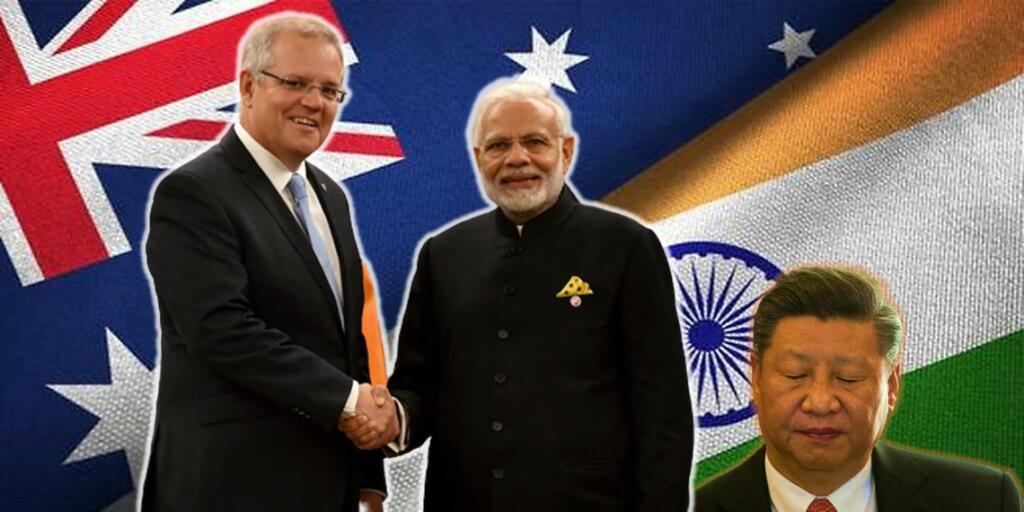India is giving some back-to-back setbacks to China and now it has received one of the biggest setbacks- a free trade deal between India and Australia. On Saturday, a major development took place that threatens to put China in deep trouble. India and Australia, two of China’s major enemies, have signed a free trade deal that promises to change the very character of the Indo-Pacific region by marginalising China. How? Let’s find out.
Trade deal signed after a decade of negotiations
Both India and Australia have realised that they must work together to keep their supply chains away from China. However, the two countries didn’t manage to secure a trade deal despite a decade of negotiations.
But on Saturday, the Australia-India Economic Cooperation and Trade Agreement was finally signed by the Trade Ministers of the two countries in a virtual ceremony.
The ceremony was also witnessed by India’s Prime Minister Narendra Modi and his Australian counterpart Scott Morrison. Morrison is expected to go to the polls soon and pitch the trade deal as a major diplomatic win, given the fact that it took one whole decade to be signed.
India in; China out
What is the significance of the latest trade deal, you may ask?
Well, let me give you some context. Australia’s minerals industry, agriculture, food processing sector and wine industry are dependent on the Chinese economy. These sectors make a great chink of their revenues through exports to China.
Ever since Sino-Australia ties deteriorated, the Chinese have been making threats of sanctions and unfair tariffs on Australian goods. This becomes a major cause of worry for the Scott Morrison government.
Read more: “Australia is fighting a war against China on its own, leaving all economic baggage aside”
However, the Indo-Australian free trade deal rescues Canberra. The Morrison government, therefore, wants to diversify its exports industry. This is a part of Canberra’s strategy to reduce dependence on China.
The deal removes tariffs on the export of over 85 per cent of Australian goods to India, worth US$9.4 billion. Tariffs will be removed from sheep meat, wool, copper, coal, alumina, and fresh Australian rock lobster. Similarly, tariffs on non-ferrous metals and critical minerals will also be ended.
On the other hand, 96 per cent of Indian goods too will find duty-free access to Australia.
The deal will be expanded further. India’s Minister of Commerce & Industry Piyush Goyal too said that India wanted to work towards a full free trade deal with Australia in an “accelerated manner”.
Morrison said that the free trade deal with the world’s second-most populous nation represented “one of the biggest economic doors there is to open in the world today”.
So, India has created a platform for Australia to diversify its exports. It means that China will be side-lined and India will take its place.
India ruins China’s trade leadership role
The free trade deal also demolishes Beijing’s dream to assume the leadership role in trading activity in the Indo-Pacific.
India had opted to stay out of the Regional Comprehensive Economic Partnership (RCEP)- the mega free trade agreement that includes most of the big powers in the region.
China wanted to helm the RCEP, exclude India and lead trade in the Indo-Pacific region.
However, by finalising its free trade deal with Australia, India is making it clear that it is not going to leave the region in China’s hands. Regardless of the RCEP, China continues to fight a trade war with Australia. It is also locked in disputes with the other two big powers in the region- Japan and South Korea.
India has started with Australia and now it can seek more free trade deals with the likes of Japan, South Korea and the ASEAN countries. The RCEP is more or less neutralized and this is bound to rattle the Chinese.
